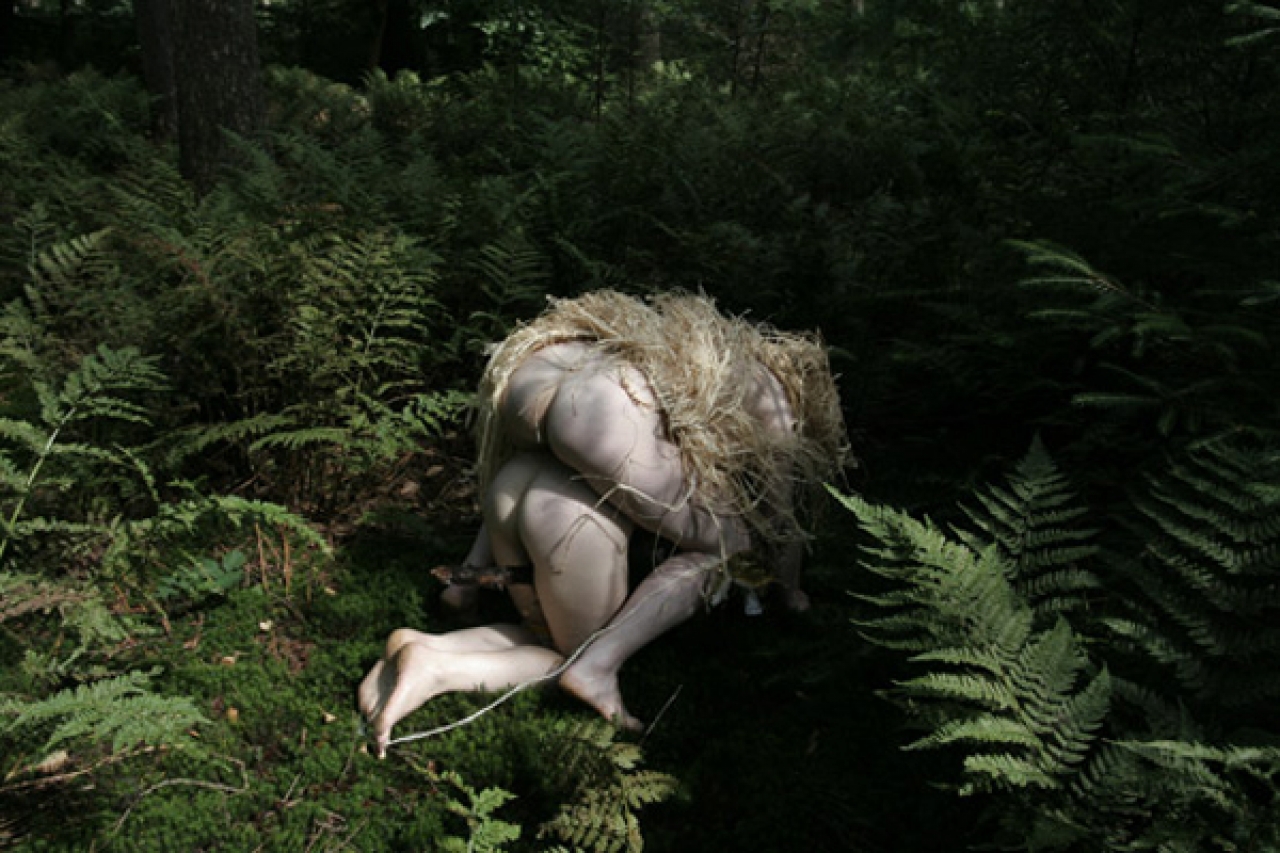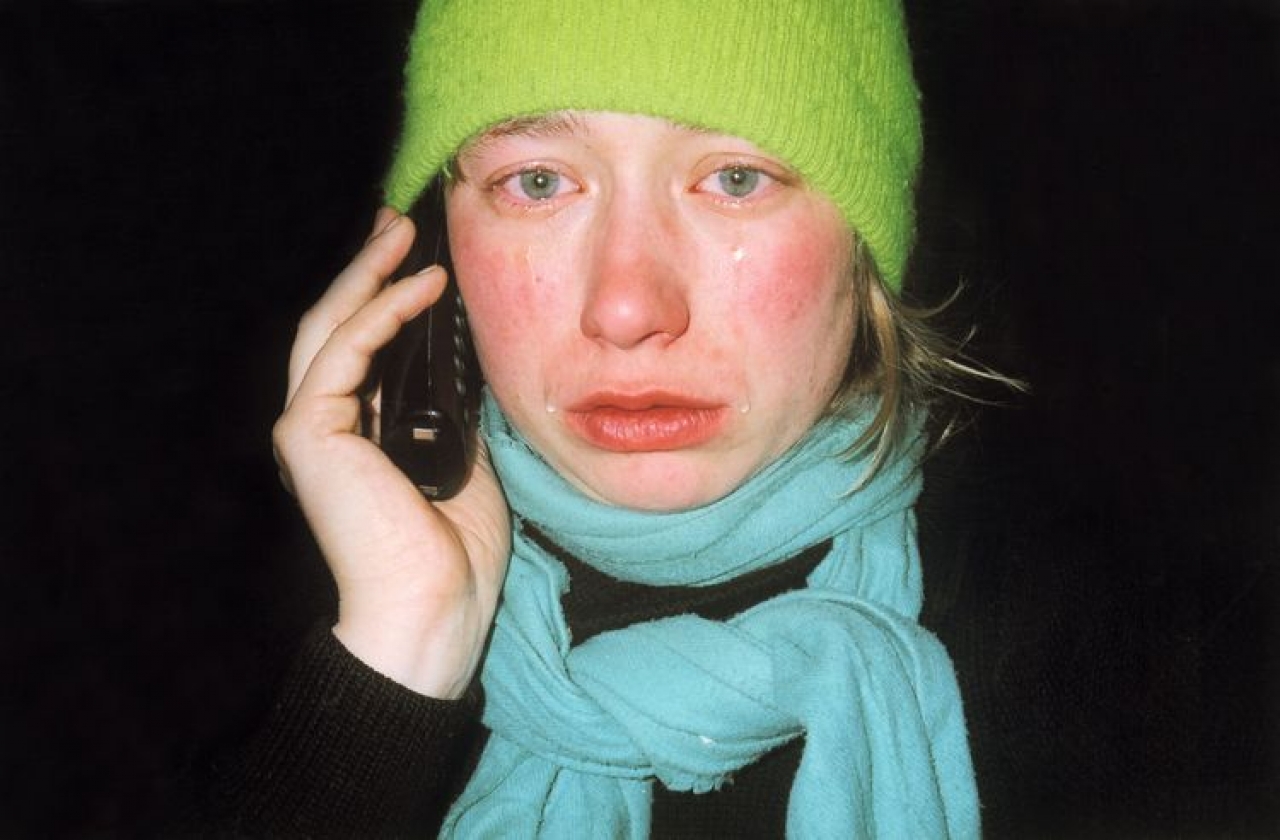Anti-selfies and bondage furniture
An interview with Melanie Bonajo in Dazed and Confused
Melanie Bonajo sees the world through the eyes of a potted plant as she plots against fake happiness and rails against YouTube censorship
As part of our new summer US project States of Independence we’ve invited our favourite 30 American curators, magazines, creatives and institutions to takeover Dazed for a day. This week, State of Sex takes an all-encompassing look at sexuality, gender and all the flavours of the American rainbow.
Ca·pri·cious – Given to sudden and unaccountable changes of mood or behaviour. Over the past ten years multi-disciplinary art platform Capricious has crept up on us, carving out an undeniable monopoly on erotic, queer and feminist discourse through art. It only seemed right then, to get them to round-off State of Sex. Today they’ll be giving us an exclusive insight into their favourite artists raising the bar right now. Check back here throughout the day for their Dazed guest edit.
Capricious artists don’t do things by halves and Melanie Bonajo is a textbook talent across the field – with so many strings to her bow, the artist is a one-woman symphony when it comes to art, sex and explorations of the body. From her startling Bondage Furniture series to her recent Reflections On The Other at Be Capricious, Bonajo’s art has graced several international shows from PPOW Gallery in New York to Foam back in Amsterdam. Often centering her creations on paradoxes and gender representation, Capricious was a natural fit. Here we talk art in ‘generation narcissism’ and why we need to put the pussy on a pedestal.

Tell us a bit about your art background.
Melanie Bonajo: I make experimental documentaries. I play in a band. I take pictures. I make books and architectural sculptures that people can play in. I give performative lectures. I organise music and performance art events. I work with chimpanzees in a sanctuary. Mostly, I try to understand existential questions by looking at our domestic situation and concepts of home. In my dreams I wander through gas stations, highways, warehouses and an endless suburbia which have covered the planet like stretched out chewing gum. I am deeply intrigued by the obscurity surrounding nature. Nature was something that was not present in my childhood – for a long time I’ve been looking and longing for real nature, but I didn’t know what it was or where to find it. My favourite playgrounds are cultural misinterpretations. Things that grasp me are phenomena like “cargo culture” or “techno-paganism”, symbolic transfigurations to highlight the intangibility of the meaning of the objects that we surround ourselves with, and the space these objects occupy in our daily mindset as reference points to reality. They have their own logic. They define us as much as we define them.
Why Capricious? What was it about their ethos and the type of art they support that attracted you?
Melanie Bonajo: I met Sophie Mörner when she just started the magazine. She featured one of my pictures on the cover, and we have been close friends since then. For a while I co-edited some issues with her and she has published two of my books, I have a Room with Everything andVolkerschau. Spring next year I will have a solo show in her new gallery space in the Lower East Side, and I’m very much looking forward to that.

How long have you been living and working in the US and what drew you over there ?
Melanie Bonajo: I have been living in the US since January. I won an art award from the Netherlands. I lost my wallet twice since I moved here and twice someone brought it back to me – this city is full of nice people. This city is filled with polarity, you can go for a walk, turn around the corner and you life will never be the same. And that can happen every day. New York has such a condensed energy; it’s a huge mirror reflecting your mood immediately.
Tell us a bit about your Anti-Selfie series – where did that come from and what’s the message you’re trying to convey?
Melanie Bonajo: I started to take the pictures as a way of putting myself outside of the situation of sadness and look at myself from the point of view of an observer. As soon as you point the camera to yourself, you take yourself out of the moment and look at the situation from the perspective of an observer. Even while being sad, a part of me was aware of the ridiculousness and selfishness of my melancholy.

Why were you crying?
Melanie Bonajo: Whatever my personal reasons; they were totally trivial contemporary problems. They represent moments of fake suffering that our society is ill with. They were selfish moments in which my focus was placed on alienation and detachment with the world around me. Basically I was looking in the wrong direction in order not to have to be present, responsible or function, because reality didn’t satisfy my personal desires or needs. A dominant theme in our society is that you should be happy, attractive, sexy, young and if you’re not, there’s something wrong with you. The outrageousness of seeing all these crying images together makes a kind of plot against the fake happiness, but at the same time works against the fake sadness our society proposes to us.
How does sex tie in there?
Melanie Bonajo: I called these images Anti-Selfie, because they’re not beautiful images that use sexual attractiveness to make me visible as a women. Part of my work was to create this intense, long-term series of cultural phenomena that are kind of hidden or loaded with shame and a sense of social censorship. Part of this was showing my own weakness by taking pictures of myself in sad moments crying, another one is taking hundreds of pictures of my girlfriends peeing in public. The series often tries to complete the subject of female liberation and body-representation, meaning they are not stylised images meant to appeal to the implied male spectator. Next to that I believe feelings of shame or embarrassment are very healthy for the human condition, because they humble the ego. Transcending feelings of shame by not taking yourself too seriously is liberating your mind, spirit and the people around you.
Do you think the art world is becoming too sex-saturated?
Melanie Bonajo: What the world needs is more sex. And better sex and to be more chilled out about it and men should be a bit more giving and put the pussy more on the pedestal in the bedroom and not forget that there is a body attached to the genitals and a person inside that body. Women need to reclaim their sexual power and ask more for what they desire and need, and both could open up their hearts. Women can behave “slutty” – as in, completely surrendering to one part of their sexual nature. Sexual stereotypes are part of the whole sexual spectrum, but a lot of aspects of sexual potential are severely under-addressed.
What do you think the future of the representation of the body is in art?
Melanie Bonajo: Recently my YouTube video “Pee on Presidents” was removed after it went viral for a very brief time. I refuse to accept this censorship. My video should be available to an online community and not solely banned to more liberal spaces, like museums, film festivals or porn-sites. I think it is important to keep negotiating with social media platforms. Aspects of the female body that are not regulated according to the aesthetic norm are censored on social media platforms: nipples, breast feeding, dancing and peeing. They are not pornographic, perverse images made to provoke. And I need those images in order to feel normal as a woman. Men are pissing in public all over YouTube. A censored online body is a reflection of censorship in the world of the flesh. Peeing is an aspect of our biology. One can’t censor biology! And yeah, the pee is not coming from our forehead.
Where do you draw inspiration from?
Melanie Bonajo: My main inspiration comes from looking at the world through the eyes of a potted plant. I’m trying to prove that plants are a smarter and higher evolved species then humans. Culture is a tool belonging to nature that people can use. It also means you’re captured in a worldview in which you do not take responsibility for only one thing, but you’re responsible and in continuous connection to everything. I guess I draw inspiration from what society prefers to hide: the alienating force of our self-imposed institutions, the way we treat animals, our proclivity for sadness, depression and shame, sexuality and most importantly, our complex and troubled relationship to technological objects and the natural world that surrounds us. Nobody can claim the truth.
Any particular places in the US that you’re creatively drawn to?
Melanie Bonajo: My band ZaZaZoZo’s (in collaboration with Joseph Marzolla) latest album was recorded in Greenland. These kind of isolated places are interesting because the people living there are confronted with the Western mindset, and in the conversion between their culture and ours, a new culture is created. I’m interested in these places that are not completely overtaken by Western capitalism and globalization, but are still on the edges, and the people living there are still somehow intrinsically involved in their landscape. Unfortunately this way of life is also in the process of dying out: half of the people in this small community of hunters and gatherers are alcoholics, while the other half is still trying to survive in their traditional ways. For me it is a metaphor that culture is not something that is hermetically stuck, that you can never really claim it as truth. Culture is a living organism that is always moving and evolving – that is why art is interesting – but Nature is still boss.
Visit the website of Dazed & Confused


